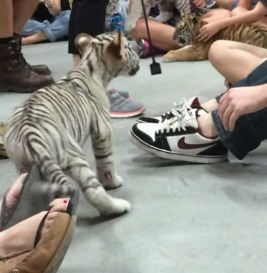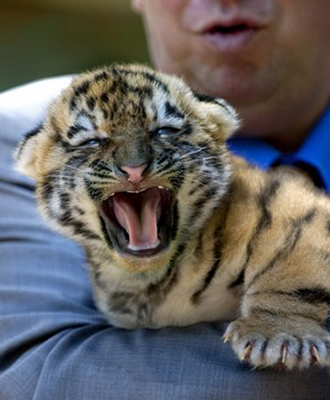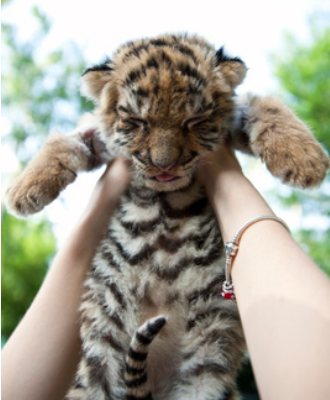The Problem with Tiger Cub Petting
One of the most popular and profitable activities of tiger breeders and exhibitors is tiger cub petting. You can hold, pet, walk, run, and in some places, swim with a tiger cub for a fee. The facility is usually advertised as a sanctuary with the tigers being rescues, when in fact, these centers are tiger mills that breed, trade, and sell the tigers.
Some exhibitors have mobile units, from two cubs in dog carriers in the back of a pick-up truck to tractor-trailers with 10 to 12 cubs. They continuously travel, often south to north, setting up in state fairs, shopping malls, university alumni gatherings, or fast-food parking lots; any place they can draw a crowd.


Technology has simplified the business. The operator must no longer set up a tent or a photo booth and wait for pictures to be developed. Now every phone is a camera, and all they do is pull the cub out of the cage and hand it to you. Who can resist the chance to hold an adorable tiger cub? The workday for the tiger cub goes on for hours, and at $20 per picture, this is a very profitable business for the owner.
Many Litters
Female tigers in the wild give birth to a litter of three to four cubs every three years. In captivity, the breeders take the cubs when they are two days old, and the tiger quickly becomes fertile again. She is immediately re-bred and can have three litters a year for 10 years, at which point she usually dies of breast cancer.
Once the cubs are too old or too big for petting, they are sold or leased to roadside zoos, breeders, or other exhibitors. Recently, tiger selfies have become popular where tigers are used as props to feed social media or dating sites.


Deplorable Conditions
In a 2012 rescue of three tigers from a Mississippi roadside zoo, the cages had to be cut open because their doors were too small for the tigers to pass through. The animals had been put in these cages as cubs and grew too large for the opening. They had never left the pens.


